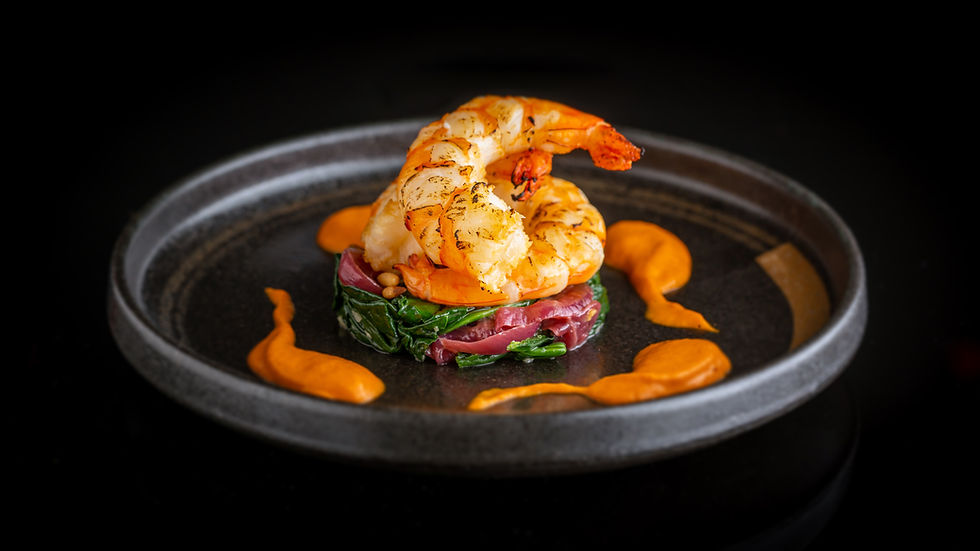Real-Life Examples of Brands Mastering Aesthetic Empathy
- lifeasstyleadm
- 9 de fev.
- 3 min de leitura
In our previous discussions, we’ve explored the concept of aesthetic empathy and how it can transform customer relationships. Now, let’s take a look at how some of the world’s leading brands have mastered this art and used it to foster deeper emotional connections with their audience. By carefully curating multisensory environments, these companies are elevating their offerings and crafting moments that appeal to all five senses.
Google’s “A Space for Being” Exhibition: The Power of Neuroaesthetics
Google, in collaboration with leading scientists, launched the groundbreaking “A Space for Being” exhibition to showcase the powerful connection between aesthetics and well-being. By designing rooms with carefully chosen lighting, sounds, textures, and scents, Google demonstrated how the right blend of sensory experiences can positively impact mental health. The exhibition highlighted the concept of neuroaesthetics—the study of how different sensory inputs affect our emotions and cognition—and showed how brands can use this knowledge to create spaces that improve visitors' moods and overall well-being.

2. Starbucks: Crafting the Perfect Sensory Experience
Starbucks is another brand that excels in aesthetic empathy by designing experiences that engage multiple senses. The scent of freshly brewed coffee, the cozy ambiance of their stores, and the distinctive look of their cups and packaging all contribute to a multi-sensory experience that invites customers to return again and again. Starbucks goes beyond just selling coffee; they’re selling an immersive sensory environment that makes customers feel a sense of belonging. By paying attention to sensory details, Starbucks has created an emotional connection with its customers, fostering a loyal community of coffee lovers.

3. The Ritz-Carlton: Immersive Luxury with Multisensory Branding
The Ritz-Carlton is renowned for its commitment to creating unforgettable, luxurious experiences for its guests. The brand has long embraced aesthetic empathy through the careful selection of sensory elements, such as specific scents and sounds, that evoke emotions and contribute to the overall ambiance of its properties. In Bangalore, the Ritz-Carlton took this a step further with the introduction of “Dineamation”, an immersive dining experience that blends exquisite culinary offerings with captivating entertainment. By engaging multiple senses—taste, sight, sound, and even smell—the Ritz-Carlton creates a deeper, more emotional connection with its guests, ensuring their experience is both memorable and highly resonant.

2. IKEA and SONOS: A Harmonious Blend of Sight and Sound
IKEA, a brand famous for its functional and visually pleasing designs, has partnered with SONOS to develop the SYMFONISK table lamp—a product that seamlessly integrates light and sound. This innovative collaboration not only helps reduce clutter by combining two essential elements of home decor, but it also creates a multisensory experience that appeals to both the visual and auditory senses. The result is a product that enhances the overall aesthetic experience, making it a perfect example of how brands can merge multiple senses to improve customer satisfaction and create more delightful offerings.

Why These Brands Succeed: The Impact of Aesthetic Empathy
These brands stand out by recognizing the importance of sensory experiences and intentionally crafting environments that connect with their audience on an emotional level. Whether it’s through product design, innovative collaborations, or immersive experiences, aesthetic empathy enables brands to create lasting impressions and foster deep emotional bonds with their customers.
By applying these principles to your own brand, you can unlock the potential of aesthetic empathy to build stronger connections with your audience and enhance the overall customer experience. Whether you’re designing a product, curating an event, or creating a space, using sensory cues thoughtfully can elevate your brand’s impact and resonate emotionally with your customers.
Read the full article : https://www.thebrandingjournal.com/2024/06/aesthetic-empathy-to-elevate-brands-experience



Comments